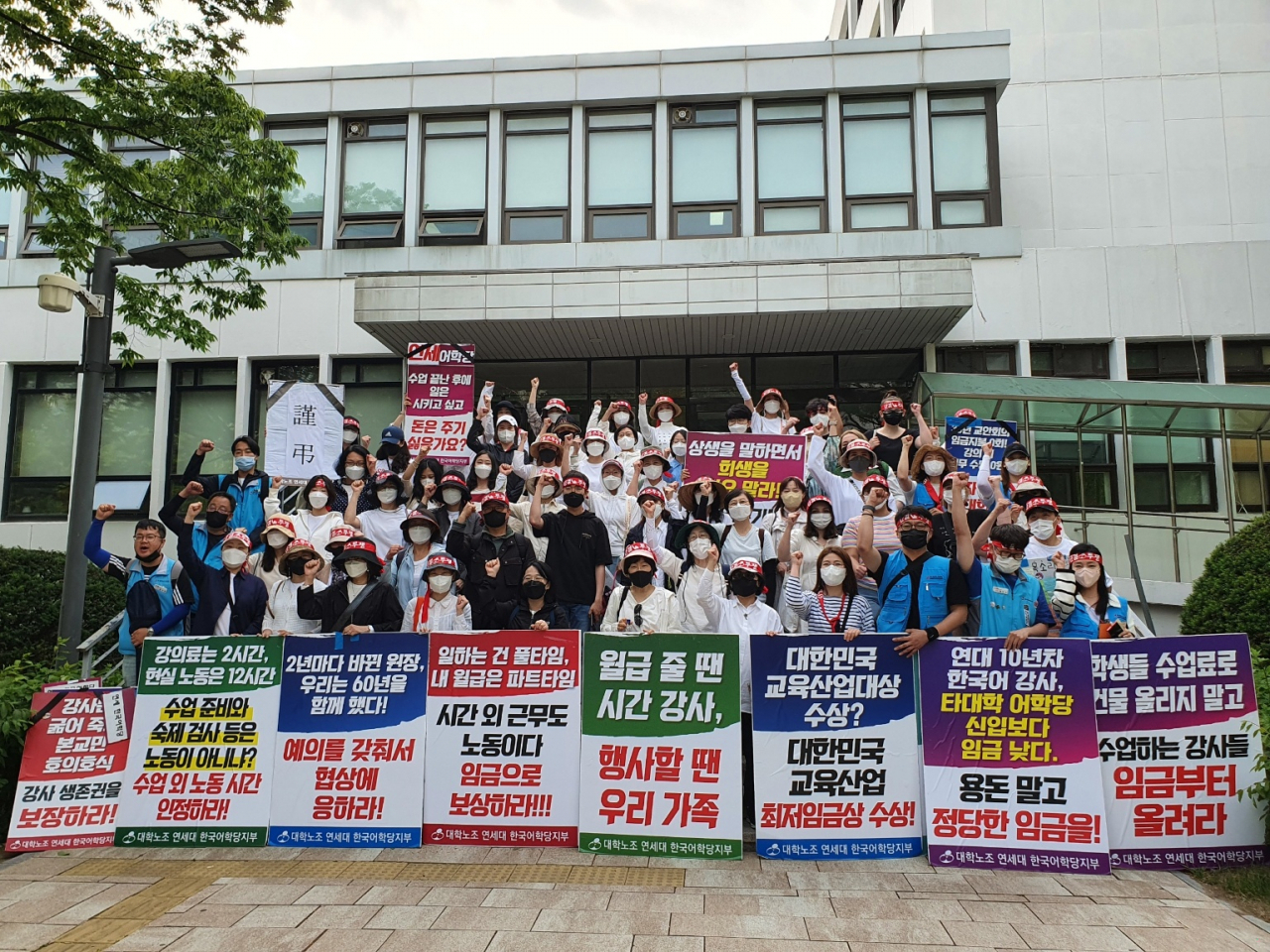
The rise of Korean as a popular choice among foreign language learners around the world has become common knowledge in recent years, but the working conditions of those who teach it are far from encouraging.
Korean language instructors’ wages depend on the country and the institution where they are working, but their terms of employment in Korea are generally significantly below those of average workers. They are often not entitled to paid leave, maternity or paternity leave, basic insurance benefits or severance pay, while most are paid on an hourly basis less than 40,000 won per class hour.
Most get only a small allowance, if that, for essential work done outside class hours such as prepping for class, meeting with students to discuss their difficulties and participating in various events.
Things are not much different for those working in language institutes at universities here, most of whom have master’s degrees and state-certified licenses to teach Korean.
After struggling to get their voices heard for years, instructors at Yonsei University’s Korean Language Institute, one of the biggest language centers here, unionized themselves in 2019 as a branch of the nation’s largest umbrella union.
“As for the instructors at Yonsei KLI, before COVID-19, we taught 20 hours of lessons per week and the annual pay came out to between 20 million won and 25 million won ($14,784 and $18,480) before taxes,” Choi Jae-hyun, head of the Yonsei KLI branch of the universities arm under the Korean Confederation of Trade Unions (KCTU), told The Korea Herald.
“But during the pandemic, our hours of teaching were almost halved to about 10 hours a week, which meant a monthly income of between 1.2 and 1.4 million won. This was much lower than the monthly income of a minimum wage worker (working full-time) by 2021 standards, which was 1,822,480 won.”
Through collective bargaining since 2020, Yonsei KLI instructors got a 3,000-won raise for their hourly pay, which translates into 31,000 won per hour for the lowest pay grade and 38,000 won per hour for the highest.
A Korean language course usually consists of four hours of classes five days a week from Monday through Friday.
The 140 instructors at Yonsei KLI, while low-paid, constitute a relatively small group with comparatively stable employment status, similar to those working at Kangwon National, Kyung Hee and Seoul National Universities.
Other Korean instructors teaching elsewhere here are hired on ultra short-term contracts, up for renewal every 10 weeks.
Last month, Rep. Ryu Ho-jeong of the minor progressive Justice Party hosted a policy debate on the Korean instructors’ labor conditions and ways to improve them at the National Assembly.
“The Labor Standards Act should apply to Korean language instructors, but their employers often avoid this by signing ‘commissioning contracts’ instead of employment contracts,” Rep. Ryu told The Korea Herald, adding that even when the Labor Standards Act is applied, they don’t get insurance, holiday pay or severance pay as they are hired as “short-term workers.”
“The relevant ministries -- Culture, Education and Labor -- should look into the labor conditions of Korean language instructors and take action to protect their rights as workers.”
Choi of Yonsei KLI says the Korean instructors at five universities meet monthly to discuss how their working conditions should be improved.
“The biggest issue for us now is to be guaranteed the minimum wage, so that what we went through during the pandemic is not repeated. Under the current wage system, the school must guarantee minimum class hours.”
Only then can the instructors regard their schools as reliable workplaces, he said.
As of last year, nearly 75,000 people had acquired state-certified licenses to teach Korean, according to a study commissioned by the Ministry of Culture, Sports and Tourism. In Korea, they teach in elementary, middle and high schools, universities and support centers for multicultural families. Overseas, they teach at Sejong Institutes, Hangeul schools and private institutes.
The number of foreign university students studying in Korea stood at around 167,000 last year, up from 12,000 in 2003, according to the Education Ministry.
This is part of The Korea Herald’s “Hello Hangeul” project which consists of interviews, in-depth analyses, videos and various other forms of content that shed light on the stories of people who are learning the Korean language and the correlation between Korea’s soft power and the rise of its language within the league of world languages. – Ed.





